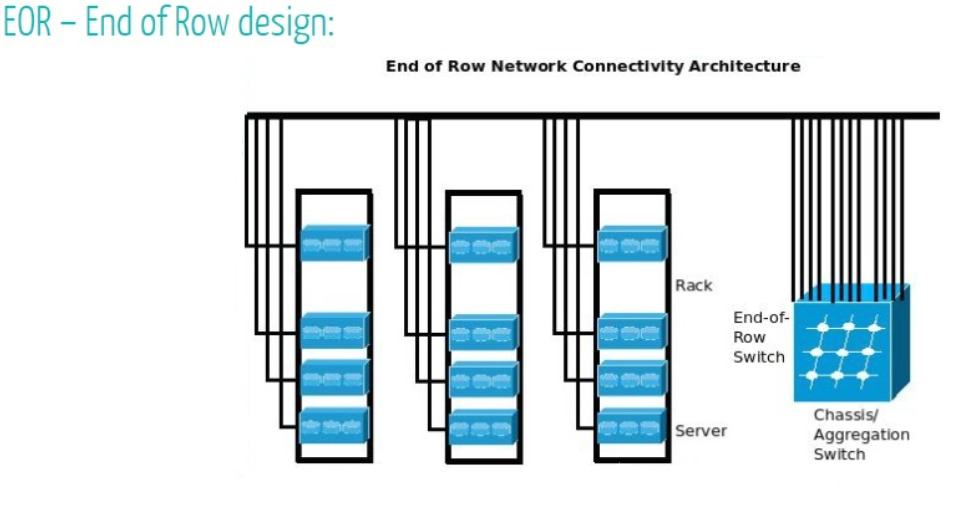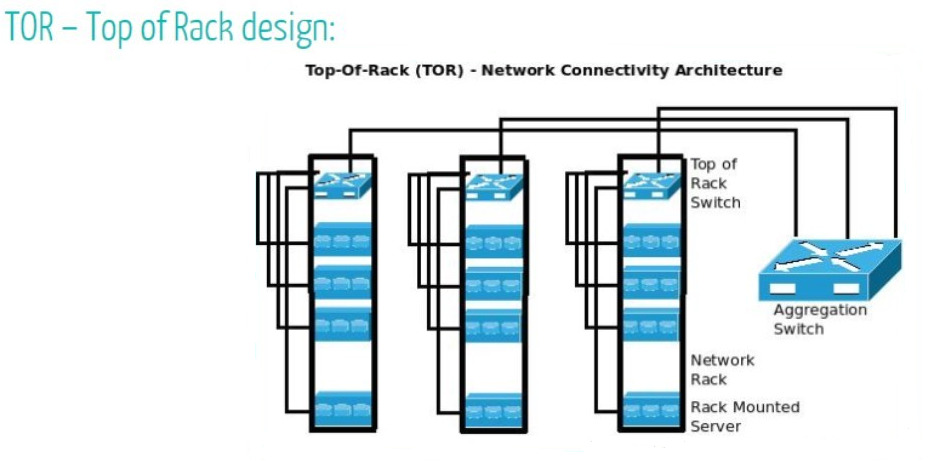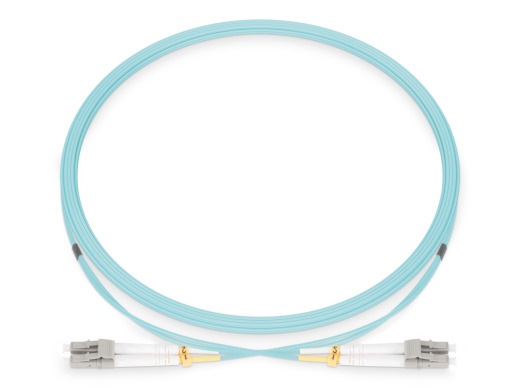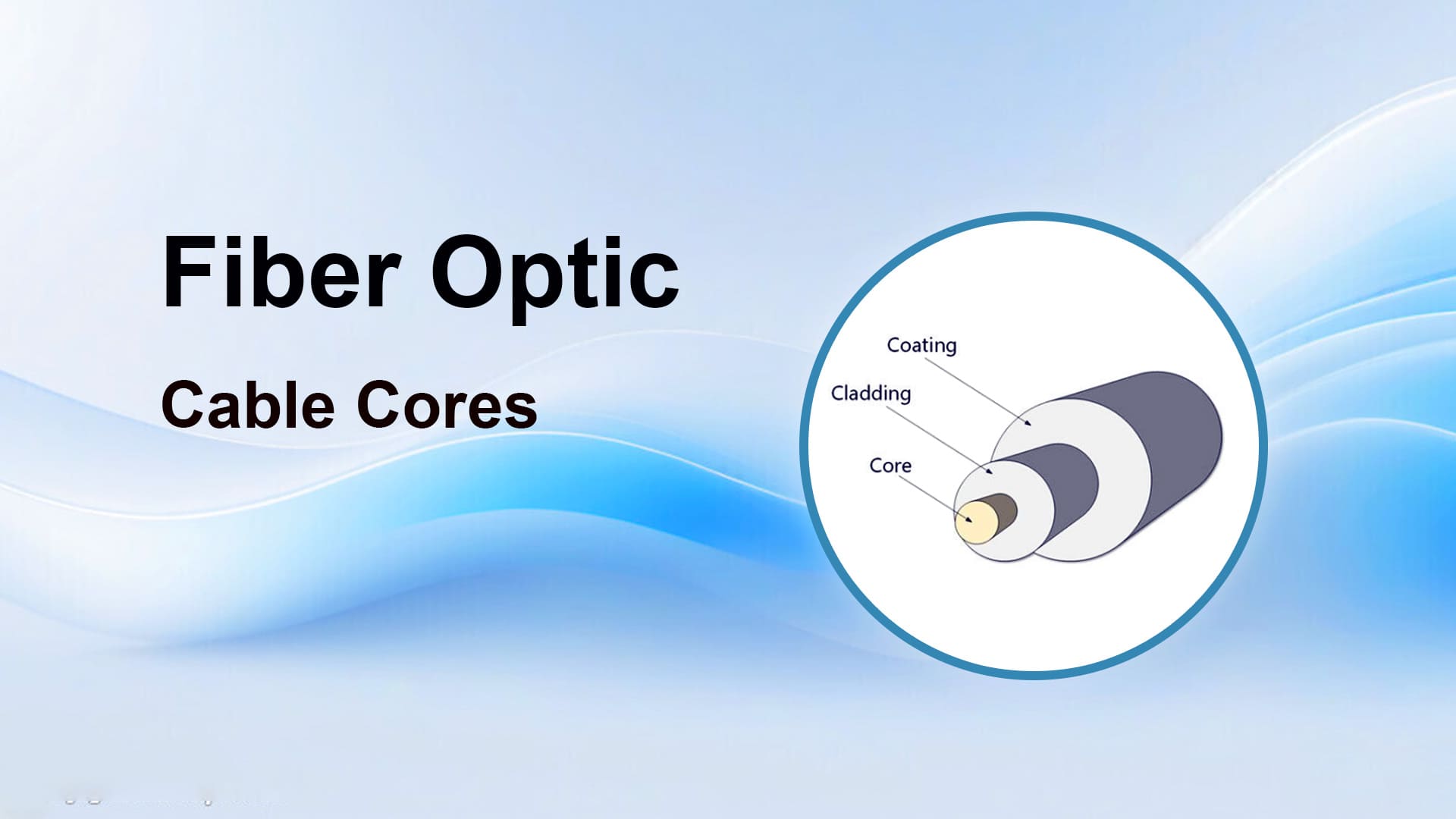Network Cable Types Explained: How to Choose and Install Correctly?
What is Network Cabling
Network cabling system is a modular and standardised network data transmission channel, using a layered structure and open interface protocols, which can achieve flexible expansion and efficient operation and maintenance, while taking into account the hardware compatibility of communication equipment, providing hardware access interfaces for all devices. Network cabling system works in the physical layer of the whole network, carrying all the data exchange work in the network, is the foundation of the whole network. For the data centre, without network cabling system, the data centre can not be set up, stable operation.
Importance of Network Cabling for Data Center
Network Cabling Brings Business Reliability Assurance to the Data Center
A perfect data center network cabling solution will reserve enough redundancy at the time of design, so that if there is a link failure during business operation, the system will automatically switch to the redundant link, with a switching time as short as milliseconds; meanwhile, the design of structured cabling can achieve rapid location and repair of the failure point to reduce the business interruption time, and to avoid the loss caused by the business interruption time. It brings stable reliability guarantee for data centre business.
Network Cabling Brings Efficiency Optimisation to the Data Center
Data center network cabling has sufficient bandwidth capacity to effectively avoid network congestion, and can carry high throughput data transmission to meet the needs of high throughput scenarios such as AI training and high-performance computing, improve business efficiency, and reduce lag and delay.
Network Cabling Brings Powerful Scalability and Compatibility to Data Center
The modular architecture design of data centre network cabling has strong expandability and compatibility, and the network can be expanded independently for individual modules during business expansion, which will not cause network paralysis affecting other business operations, and network upgrades can also be seamlessly integrated with the original network through modular design, avoiding duplication of construction costs due to technology iteration. The upgrade of the network can also be seamlessly integrated with the original network through modular design, avoiding the duplication of construction costs due to technology iteration.
Network Cabling Brings Intelligent Operation and Maintenance to Data Center
Data centre network has perfect full life cycle management, network cabling comprehensive use of labeling system, all cables marked with the starting point and end point, data collation and archiving, and even on the cloud, through professional management software one-click query and positioning of cables, can also be accessed to AI to bring intelligent management and operation and maintenance to reduce the complexity of operation and maintenance and operation and maintenance cost, and shorten the network interruption time caused by the following faults.
Data Centre Network Cabling Major Architecture
EOR Network Cabling Architecture
EOR is the most traditional architecture for data centre cabling, access switches are deployed at the end of each row of cabinets for unified access to the network for servers, which we call EOR switches, core switches or computing servers are installed below the EOR switches, and for reliability reasons, each row of cabinets is usually equipped with two network cabinets, which are located at the head-end and end-end of the row, respectively. All devices are connected through horizontal cables in a permanent link, which facilitates management and maintenance, but also increases the connectivity between the server cabinets and the network cabinets. The further the server cabinets are from the network cabinets, the longer the wiring distance is in the server room, which leads to a large amount of cable maintenance workload and poor flexibility.

MOR Network Cabling Architecture
The MOR network data wiring architecture is an improvement on the EOR network cabling architecture. The main difference is in the placement of the network cabinets, which are placed in the middle of each row of cabinets. It shortens the cable distance from the server cabinet to the network cabinet at both ends and simplifies cable management and maintenance. However, compared with TOR, both EOR and MOR, the complexity of cabling and the difficulty of management and maintenance are still their biggest drawbacks.
TOR Network Cabling Architecture
TOR network data wiring architecture is deployed in each server cabinet 1 to 2 switches, to achieve the interconnection of servers and switches in the cabinet, the biggest advantage of the TOR architecture is to simplify the connection between the server to the switch, simplify the cable management, reduce the complexity of the network structure. It is also more convenient to replace cables for subsequent business expansion.
The TOR architecture also has its drawbacks. The most obvious one is that the TOR architecture expands the management domain of the entire data center computer room. Each cabinet is equipped with a switch, which means there will be a relatively large number of switches in the computer room. Each switch needs to be configured, managed and maintained, which requires a lot of human resources and also increases the probability of equipment misconfiguration.
Another drawback of the TOR architecture is port waste. At present, most TOR switches can provide 48 downlink ports. Taking the deployment of two TOR switches per cabinet as an example, there are a total of 96 downlink ports. However, a standard cabinet is only 42G. After deducting the space occupied by TOR switches, at most only 40 downlink ports will be used, and half of the ports will be vacant, resulting in resource waste.

How to Choose a Network Cabling Solution That Meets Your Needs
Develop Sound Needs Analysis and Planning
Data center network data wiring needs to be based on the size of the network, the operation of the business and the future of the subsequent expansion of whether to develop a reasonable network planning, selection of the most appropriate cabling scheme, drawing wiring plan, marking the location of the equipment, routing paths, the location of the distribution frame, and leave a good margin.
Selection of Network Cabling Architecture
Reasonable network cabling architecture can speed up construction, reduce the complexity of later operation and maintenance, and save a lot of costs. For data center with limited cost and sufficient construction time, EOR or MOR network architecture can be used; for data center with sufficient budget and tight schedule, TOR network architecture can be used to reduce cabling complexity, speed up construction and facilitate later operation and maintenance.
Advantages of LSOLINK in Network Cabling Solutions
Exclusive Programme Design by a Team of Senior Industry Experts
LSOLINK is a one-stop supplier of professional optical communication products. Provide customers with professional consultation, solution design, one-stop product supply and technical support services. The senior expert engineer team in the industry has rich experience in network solution design and operation and maintenance. They customize exclusive network solution designs for each customer, maximizing the consideration for customers and enhancing their user experience.
Outstanding Product Performance
LSOLINK products undergo rigorous durability and performance tests, and are also subject to actual measurement to ensure that the products delivered to customers can work perfectly.
The Product Range of LSOLINK
LSOLINK has a rich product line, covering optical modules, switches, optical fiber patch cords, network cable copper cables, wiring accessories, etc. It can provide various product solutions, offering customers a one-stop service experience, ensuring product consistency and reducing after-sales risks.


LSOLINK’s Technical Support Services
LSOLINK offers customers 7x24x365 online technical support services. Hundreds of engineers are online to answer various questions about the products for customers, and it also provides a 5-year extended warranty for the products. This demonstrates LSOLINK’s confidence in product quality.
Installation Steps and Acceptance of Data Centre Network Cabling
Preparations Before Installation of Fiber Optic Cabling
Before fibre optic cabling, we also need to prepare a variety of equipment, fibre optic fusion machine, fibre optic cutting knife, red light pen, optical power meter, etc., long-distance laying also need to prepare OTDR, accessories can not be missing, heat-shrinkable tubing, fibre optic connectors, attenuators, fibre-optic cleaner, used to straighten the wire straightening racks, tie-wraps and cable labeling paper, etc., which can ensure that the fibre-optic cabling is properly installed.
Wiring Path Planning and Conduit Laying
Optical fibre cabling we have to plan the backbone cable path, installation of cable routing trough, indoor trunking fill rate requirements ≤ 50%, vertical bridges in the cable every 5.5m fixed with ties to avoid tensile damage to the fibre core, ceiling cabling along the cable tray, the bending radius required ≥ 50mm, to avoid breaking the optical fibre.
Optical Fibre Fusion Splicing and Equipment Connection
Fibre optic fusion splicing steps:
Stripping the outer sheath of the optical fibre, use the optical fibre cutting knife to cut the optical fibre, after cutting to ensure that the end face of the optical fibre is flat, the optical fibre cut without problems after the use of fusion splicing machine aligned with the core of the fibre to melt the fibre (requires professional operation)
The end of the fusion of the fibre to use the heat-shrinkable tube to protect the fibre, and then use the fibre optic quick connector for the optical fibre to install on the connector.
Use a red light pen to test the connectivity of the optical fibre to ensure that the fusion is normal and that there is no optical fibre breakage or incomplete fusion.
Long-distance optical fibre also need to use OTDR test to ensure that the optical fibre performance is normal, can be optical distance transmission.
Device connection steps:
Measure the optical power transmitted by the optical fibre using an optical power meter to ensure that the optical power is within a reasonable range to prevent the optical power from being too high and burning the optical module.
Insert the fibre optic connector into the optical module on the device side, and clean the connector end face before inserting the optical module, to avoid dust and other dirt that may cause light degradation or BER, which may affect the link quality.
After the optical module is inserted into the switch, confirm that the port indicator of the switch is on and data communication is normal
Fix the optical fibre with cable ties, tie spacing ≤ 30cm, try to make the cable neat and each cable ends should be labeled, mark the location and the equipment connected to the opposite end, each business using different colours of the label to distinguish, and recorded into the label table, to facilitate the maintenance of the later stage. The space utilisation rate in the cable channel is 50% of the best, reserving space for heat dissipation.
Testing and Acceptance
The last step is to verify the performance, test the network to achieve the expected results, and submit the test report, cabling topology diagram and label correspondence table, labelled with the cable number and terminal location, to the customer acceptance.
Conclusion
Through this article, I believe everyone has gained a preliminary understanding of data center network cabling, learned about the three scheme architectures of data center network cabling, and also understood the basic operation steps of data center network cabling. I hope it will be helpful to everyone.
In This Article
- 1 What is Network Cabling
-
2
Importance of Network Cabling for Data Center
- 2.1 Network Cabling Brings Business Reliability Assurance to the Data Center
- 2.2 Network Cabling Brings Efficiency Optimisation to the Data Center
- 2.3 Network Cabling Brings Powerful Scalability and Compatibility to Data Center
- 2.4 Network Cabling Brings Intelligent Operation and Maintenance to Data Center
- 3 Data Centre Network Cabling Major Architecture
- 4 How to Choose a Network Cabling Solution That Meets Your Needs
- 5 Advantages of LSOLINK in Network Cabling Solutions
- 6 Installation Steps and Acceptance of Data Centre Network Cabling
- 7 Conclusion
Show All
Collapse








